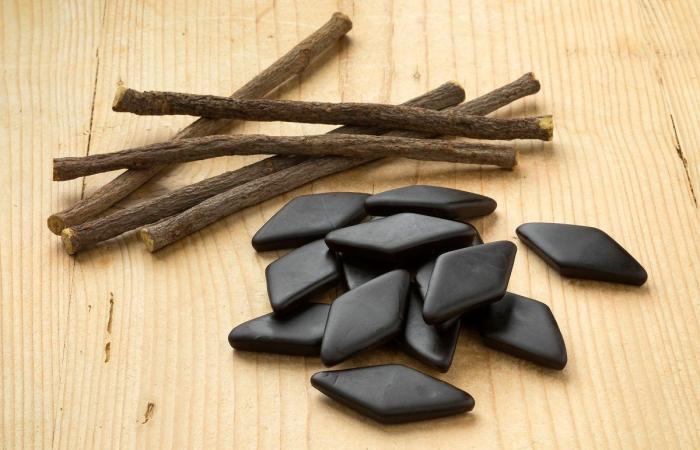This article is republished here with permission from The Conversation. This content is shared here as the topic may interest Snopes readers. However, it does not represent the work of Snopes fact checkers or editors.
Black licorice may look and taste like an innocent treat, but this candy has a dark side. On September 23, 2020, it was reported that black liquorice was the culprit in the death of a 54-year-old man in Massachusetts. How could that be? Licorice overdose sounds more like a twisted story than a plausible fact.
I’ve had a longstanding interest in how chemicals in our food and the environment affect our minds and bodies. When something apparently harmless like licorice is involved in a death, we are reminded of the famous proclamation of the Swiss doctor Paracelsus, the father of toxicology: “All things are poison and nothing is without poison; The dosage alone makes it so that one thing is not a poison. ”
I am a professor in the Department of Pharmacology and Toxicology and author of the book “Nice to meet me: genes, germs and the curious forces that make us what we are”.
The root of the problem
The unfortunate man who recently succumbed to excessive black liquorice consumption is not alone. There are some similar case reports in medical journals of patients suffering from a hypertension crisis, muscle breakdown, or even death. Side effects are most common in people over the age of 40 who eat far more black licorice than the average person. In addition, they usually consume the product for long periods of time. In the latter case, the Massachusetts man had eaten a sack and a half of black liquorice every day for three weeks.
Franz Eugen Koehler, Koehler’s Medicinal Plants via Wikimedia Commons
Licorice is a flowering plant native to parts of Europe and Asia. His scientific name, Glycyrrhiza, is derived from the Greek words “Glykos” (sweet) and “Rhiza” (root). The aromatic and sweet extract from its root has long been used as an herbal remedy for a variety of health conditions, from heartburn and stomach problems to sore throats and coughs. However, there isn’t enough evidence that licorice is effective in treating diseases.
Glycyrrhizin (also called glycyrrhizic acid) is the chemical in black liquorice that gives the candy its characteristic taste, but also leads to its toxic effects.
Glycyrrhizin mimics the hormone aldosterone, which is made by the adrenal glands when the body needs to store sodium and excrete potassium. Sodium and potassium work together as a type of cell battery that promotes communication between the nerves and the contraction of the muscles. Too much glycyrrhizin upsets the balance of these electrolytes, which can increase blood pressure and disrupt the heart rhythm. Other symptoms of excessive licorice intake include swelling, muscle pain, numbness, and headache. Examination of the man who died from too much licorice found that he had dangerously low potassium levels, which was consistent with glycyrrhizin toxicity.
It should be noted that some licorice-based foods do not contain real licorice, but instead use a flavor substitute called anise oil, which does not pose the dangers discussed here. In addition, despite its name, red licorice rarely contains licorice extract. Instead, chemicals are added to red liquorice that give it its cherry or strawberry flavor.
Products that contain real licorice are usually labeled as such and list licorice extract or glycyrrhizic acid among the ingredients. Note that some products like black gummy bears or Good & Plenty are mixes of different candies that contain both aniseed oil and licorice extract.


Darren Boucher / Getty Images
Hidden dangers that increase risk
Glycyrrhizin has a distinct liquorice taste and is 50 times sweeter than sugar. It has been used in other types of candy, soft drinks, tea, Belgian beers, throat lozenges, and tobacco. This can make it difficult to keep track of how much glycyrrhizin has been consumed, and a combination of these products can have adverse effects.
Some people take dietary supplements or supplements that already contain licorice, which increases the risk of toxic effects from consuming black licorice candy. Certain medications, such as hydrochlorothiazide, are diuretics that can cause increased urination and lower potassium levels in the body. Glycyrrhizin also lowers potassium levels and further disrupts electrolytes, which can lead to muscle cramps and irregular heart rhythms.
People with certain pre-existing medical conditions are more prone to overdosing on black licorice.
For example, people who already have low potassium levels (hypokalaemia), high blood pressure, or irregular heartbeat are likely to be more sensitive to the effects of excessive licorice. People with liver or kidney deficiency also keep glycyrrhizin in their bloodstream longer, which increases the risk of it having adverse effects.
What should I do?
If you’re a fan of black liquorice, there is no need to banish it from your pantry. Eaten in small amounts from time to time, licorice does not pose a significant threat to otherwise healthy adults and children. However, it is advisable to monitor your intake.
As Halloween approaches, it’s a good idea to remind your children that candy is “sometimes a food”, especially the black liquorice. The FDA has issued warnings about the rare but serious effects of too much black licorice, advising that people should avoid eating more than two ounces of black licorice a day for two weeks or more. The agency says that if you’ve eaten a lot of black licorice and have an irregular heart rhythm or muscle weakness, stop eating it immediately and contact your doctor.
Some scientists have also warned against routine use of licorice in the form of a dietary supplement or tea for its purported health benefits. A 2012 review warned that “daily consumption of licorice is never justified as its benefits are small compared to the adverse effects of chronic consumption.”![]()
![]()
Bill Sullivan, professor of pharmacology and toxicology; Author of Pleased to Meet Me: Genes, Germs and the Inquisitive Forces That Make Us What We Are Indiana University
This article is republished by The Conversation under a Creative Commons license. Read the original article.
These were the details of the news The creepy and dangerous side of black liquorice for this day. We hope that we have succeeded by giving you the full details and information. To follow all our news, you can subscribe to the alerts system or to one of our different systems to provide you with all that is new.
It is also worth noting that the original news has been published and is available at de24.news and the editorial team at AlKhaleej Today has confirmed it and it has been modified, and it may have been completely transferred or quoted from it and you can read and follow this news from its main source.



